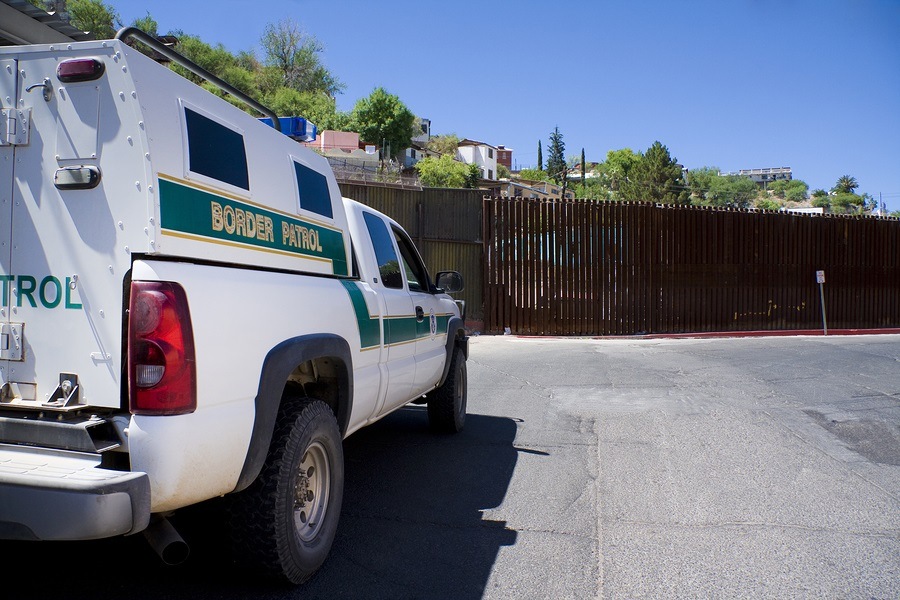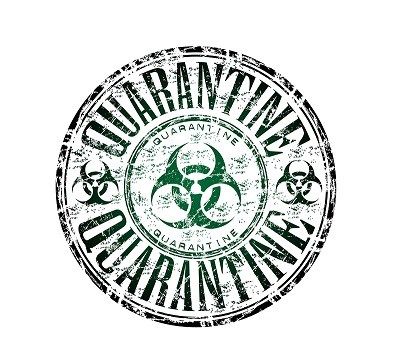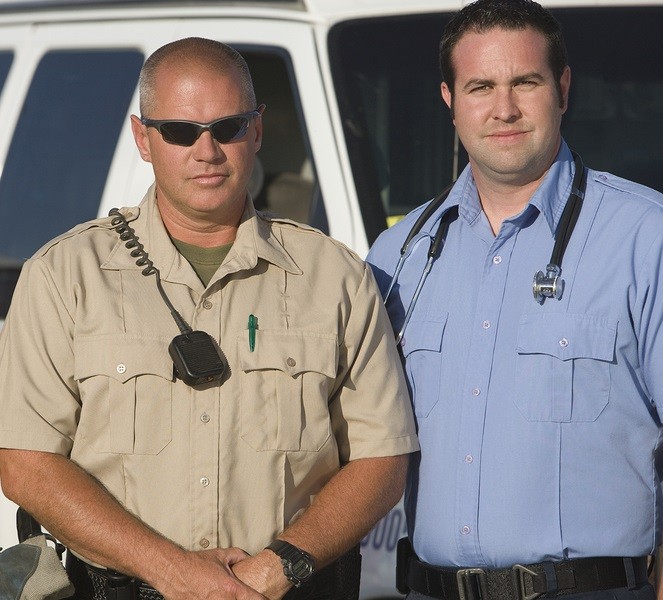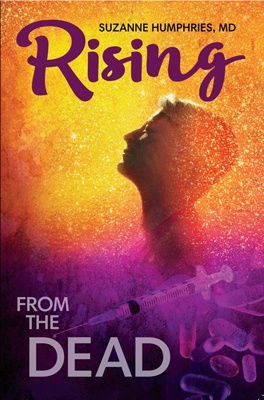How Will the New CDC Rules for Quarantine and Isolation Affect You?
by John P. Thomas
Health Impact News
There are new U.S. government rules that can force travelers into quarantine or isolation if they are suspected of having a contagious disease. The Centers for Disease Control and Prevention (CDC) published their revised rules explaining how they will intervene to protect the public from the spread of quarantinable communicable diseases such as Ebola.
For those of us who prefer to minimize our contact with the conventional medical care system and its pharmaceutical products, these new rules should cause us to carefully consider our health status when traveling across state lines or traveling back to the United States during a CDC health emergency. If we have symptoms of illness that might be confused with a communicable disease, then it might be wise to carefully consider our travel plans.
The rules were released on the last day of the Obama Administration, 1/19/2017, and will take effect on February 21, 2017. [1]
The proposed rules were circulated for public comment last fall, and comments were provided by 15,800 individuals and groups. Many comments expressed concern about preserving the rights of individuals against unnecessary quarantine, and expressed concerns about the potential for forced treatment or vaccination for communicable diseases. The process for apprehending and identifying people with contagious diseases, and the issuance of federal orders for quarantine, isolation, and conditional release were closely questioned by many of those who responded to the proposed rules.
Will the CDC Use these Rules to Establish Mandatory Vaccination?
A number of public comments questioned whether the proposed modifications were opening a door for the CDC to implement mandatory vaccination and mandatory medical treatment programs for people who have been determined to be a risk to the greater public health, because they might spread certain communicable diseases. As noted in several locations in the CDC response to public comments, the CDC denied this allegation.
The CDC comment states:
HHS/CDC does not seek to compel vaccination or medical treatment. In keeping with current practice, HHS/CDC recommends certain vaccines for post-exposure prophylaxis and individuals may choose to follow these recommendations as they deem appropriate. [Page 6898]
[All the quotations in this article were taken from the online version of the Federal Register containing the Final rule to amend regulations governing domestic (interstate) and foreign quarantine regulations. Quotations taken from the section, “Response to public comments,” will be introduced with the phrase “The CDC comment stated.” Comments answer public questions and concerns, and often give greater clarity to the meaning of the rules. Quotations from the actual text of the rules will be preceded by the statement, “The CDC rules state.”]
See: Final rule to amend regulations governing domestic (interstate) and foreign quarantine regulations
Who is Affected by these Rules?

The rules cover travelers who are residents of the United States or residents of other countries. It affects those who are traveling to the United States and those traveling across state lines within the United States. This means that the CDC and the U.S. Public Health System can exercise authority to screen people for the presence of certain infectious illnesses at airports, seaports, train stations, bus terminals, international border crossings, and at the borders between states.
This authority is not new, but is explained in greater detail in the newly revised rules.
What Diseases are Covered by the CDC Rules?
Not all communicable diseases are subject to the new CDC rules for quarantine, isolation, and conditional release. The official list of quarantinable communicable diseases has been established through several presidential executive orders.
The CDC rules state:
These quarantinable communicable diseases are currently limited to cholera, diphtheria, infectious tuberculosis (TB), plague, smallpox, yellow fever, and viral hemorrhagic fevers (such as Marburg, Ebola, Lassa fever, and Crimean-Congo), severe acute respiratory syndromes, and influenza caused by novel or re-emergent influenza viruses that are causing or have the potential to cause a pandemic. See Executive Order 13295 (April 4, 2003), as amended by Executive Order 13375 (April 1, 2005) and Executive Order 13674 (July 31, 2014). Changes to the list of quarantinable communicable diseases are beyond the scope of this regulation. And again, we reemphasize that HHS/CDC does not intend, through these regulations, to mandate vaccination or compulsory medical treatment of individuals. [Page 6898]
This means that the list of diseases could be expanded at any moment by an act of the President.
Who will Report People who Might have a Communicable Illness to the CDC?
It is standard protocol for airline pilots and cruise ship masters to make reports to the CDC when they encounter a traveler with a potential communicable illness or when a traveler dies while traveling. This is the first line of reporting and is always in effect.
The report of a potential communicable disease will trigger a response from the CDC. The CDC will send a public health worker to meet with the traveler. Travelers can be apprehended and detained for up to 72 hours to permit public health workers to arrive and to do a public health risk assessment. Both U.S. citizens and international travelers can be detained in the same way. These reporting requirements are not tied to a CDC health emergency.
What Other Steps are Used to Identify Ill People During a Health Emergency?

During times when the CDC has declared a health emergency, public health workers will become much more visible and active. An example of this was seen in 2014 when there was heightened concern about the transmission of Ebola from Africa into the United States.
During such health emergencies they will step up their surveillance of people who are traveling into the U.S. and their surveillance of people who are traveling around the U.S. They will be monitoring travelers who are moving by air, by sea, and on the ground.
The CDC will have the authority to establish screening stations, and to assess travelers for the presence of the communicable disease that is of concern. They will be able to apprehend, detain, and to obtain federal public health orders for quarantine, isolation, and conditional release. They can operate these screening stations at airport security locations, customs offices, train stations, bus stations, and U.S. border crossing points, and could even apprehend travelers at toll booths located at state borders. [Pages 6908 and 6927]
What are the Physical Symptoms that the CDC Uses for Disease Screening?
The CDC comments state:
The definition of ill person under section 71.1 has been modified to include a person who “Has a fever that has persisted for more than 48 hours” or “Has acute gastroenteritis, which means either diarrhea, defined as three or more episodes of loose stools in a 24-hour period or what is above normal for the individual, or vomiting accompanied by one or more of the following: One or more episodes of loose stools in a 24-hour period, abdominal cramps, headache, muscle aches, or fever (temperature of 100.4 °F [38°C] or greater). [Page 6892-6893]
The CDC uses more than the presence of physical symptoms when deciding to quarantine, isolate, or provide conditional release of a person with a potentially quarantinable disease. The CDC rules state:
In contrast, an apprehension of an individual is based on a variety of criteria in addition to an illness report including: Clinical manifestations, contact or suspected contact with infected individuals, host susceptibility, travel to affected countries or places, or other evidence of exposure to or infection with a quarantinable communicable disease. [Page 6902]
What Happens when the CDC Decides a Traveler is a Risk to Public Health?

New Jersey Governor Chris Christie forced a nurse returning from Africa where she was treating Ebola patients to be quarantined like a prisoner for 21 days back in 2014, even though she had no symptoms and posed no danger to the public according to medical experts. She lived in a tent with no running water. Story here.
If the initial assessment of the public health worker indicates that the traveler may be in a communicable stage or pre-communicable stage of the disease, then the traveler will be apprehended and is not free to leave. The person is not held under arrest, but is required to stay in detention until the matter is resolved.
This is how the CDC describes their authority to apprehend and detain travelers.
The CDC comment states:
To be clear, HHS/CDC is not a law enforcement agency, it has no legal authority to “arrest” individuals, but rather has been granted the authority by Congress to “apprehend and detain” individuals for the purposes of preventing the introduction, transmission and spread of quarantinable communicable disease as specified in an Executive Order of the President. 42 U.S.C. 264(b). This provision further provides that “regulations may provide that if upon examination any such individual is found to be infected, he may be detained for such time and in such manner as may be reasonably necessary.” 42 U.S.C. 264(d)(1). HHS/CDC strongly believes that these authorities may be implemented in a manner consistent with the U.S. Constitution. Furthermore, during the period of apprehension, HHS/CDC will arrange for adequate food and water, appropriate accommodation, appropriate medical treatment, and means of necessary communication. [Pages 6909-6910]
How Will the CDC Respond to Non-Quarantinable Communicable Diseases?
These are communicable diseases that are not listed in the presidential executive orders, which means the CDC cannot use its quarantine authority with these diseases. This is how the CDC describes the scope of their concern about the transmission of all communicable diseases in the United States.
The CDC comment states:
First, we note that HHS/CDC only has authority to quarantine or isolate individuals who have illnesses that are listed by Executive Order of the President as quarantinable communicable diseases. HHS/CDC does not have the ability or authority to unilaterally modify the list of quarantinable communicable diseases.
Second, because HHS/CDC also has statutory authority to prevent the “introduction, transmission, and spread” of communicable diseases, HHS/CDC may take actions other than quarantine or isolation to protect the public’s health. These other actions may include contact tracing investigations to notify individuals to seek proper treatment if they have been exposed to a communicable disease, even if the disease is not listed by Executive Order as quarantinable. [Page 6898]
The key point here is that the authority of the CDC to apprehend, detain, quarantine, isolate, and provide conditional release for people who qualify under these regulations is limited to the diseases specified by the President and limited to people who are traveling. The CDC may have an interest in the spread of other diseases, but at the current time they cannot use the quarantine authority of these rules to respond to suspected cases of measles or Zika, though they will most certainly track such cases and engage state and local health departments to respond.
The CDC maintains strong interest in the spread of non-quarantinable diseases such as measles, varicella, pertussis, rabies, meningococcal infections, and rubella.
The rules state:
HHS/CDC notes that for non-quarantinable diseases, HHS/CDC efforts would primarily be limited to assisting health departments to notify individuals of their potential exposures. [Page 6933]
The CDC comment also states:
While HHS/CDC acknowledges that the States have primary authority for quarantine and isolation within their borders, the Federal government has an important and longstanding role in preventing communicable disease spread at ports of entry and interstate. This authority is reflected in 42 U.S.C. 264 and consistent with principles of Federalism. [Page 6900]
Should a Person Travel if He or She is not Perfectly Well?
If you are planning to travel you should be aware of how these rules will affect you. These are some basic questions that will help you decide whether you should travel, especially during times when the CDC has declared a health emergency.
Before you begin your travels, take a few moments to consider whether you might be identified as an “ill person” by someone in the transportation system that you will use, or if a person at a CDC screening station might apprehend you as a possible public health risk. If you answer “yes” to several of the following questions, then you are more likely to be reported and/or apprehended.
- Do you have a fever that has persisted for more than 48 hours?
- Do you have acute gastroenteritis (diarrhea)? This means that you experienced three or more episodes of loose stools in the last 24 hours, or if you usually have loose stools, then are you having a higher number than normal.
- Do you have vomiting? Is your vomiting accompanied by one or more of these conditions: One or more episodes of loose stools in the last 24-hours, abdominal cramps, headache, muscle aches, or fever with a temperature of 100.4 °F or greater.
- Have you had personal contact with people who might have been infected with quarantinable diseases such as tuberculosis, Middle East Respiratory Syndrome (MERS), and Ebola?
- Have you had personal contact with people who might have been infected with non-quarantinable diseases such as measles, varicella, pertussis, rabies, meningococcal infections, or rubella?
- Have you been vaccinated for the diseases that are of concern by the CDC? If you have not, then you might be considered to have “host susceptibility,” which means they will consider you to be a higher risk for having and spreading an infectious disease.
- Are you traveling after having visited another country or U.S. state where there is an existing problem with one of the communicable diseases listed in the CDC rules?
- Do you have symptoms of a non-infectious health condition that might be confused with one of the infectious diseases that are being monitored by the CDC?
The greater the number of positive answers that you give to these questions will be an indication of your likelihood of being reported to the CDC or identified by a CDC screener as a potential carrier of contagious disease. If your number of responses is high, then you might want to stay home until your health improves or choose a mode of travel that is less likely to result in an interaction with a CDC public health screener.
The CDC states that they are not interested in identifying people with symptoms of a common cold. “Executive Order 13674 (July 31, 2014), explicitly excludes “influenza” from the definition of severe acute respiratory syndrome.” [Page 6910] So, if you only have a runny nose or cough without a number of the other symptoms mentioned above, then in theory you should be able to travel without interruption.
Are there Medical Exemptions from the CDC Quarantine Rules?
The CDC comment states:
While these regulations do not authorize compulsory vaccination or medical treatment, there is no recognized “medical exemption” from quarantine, isolation, or conditional release and HHS/CDC declines to create one. [Page 6904]
What Happens if I am Reported to the CDC?
If you are reported to the CDC while traveling, then you can be apprehended and detained, and prevented from traveling any further. Your detention can last up to 72 hours while you wait for a trained public health worker to reach you and do a risk assessment. While you wait, you are to be provided with “adequate food and water, appropriate accommodation, appropriate medical treatment, and means of necessary communication.” [Page 6971]
What Happens During an Interview with a Public Health Worker?
During your interview by a public health worker you may be required to provide various types of information such as your birth date, and to show your passport.
The CDC rules state:
As part of the public health prevention measures, the [CDC] Director may require individuals to provide contact information such as U.S. and foreign addresses, telephone numbers, email addresses, and other contact information, as well as information concerning their [the traveler’s] intended destination, health status, known or possible exposure history, and travel history. [Page 6971]
The public health worker can conduct non-invasive procedures to assess your condition.
The CDC rules state:
Non-invasive means procedures conducted by an authorized public health worker (i.e., an individual with education and training in the field of public health) or another individual with suitable public health training and includes the visual examination of the ear, nose, and mouth; temperature assessments using an ear, oral, cutaneous, or noncontact thermometer, or thermal imaging; and other procedures not involving the puncture or incision of the skin or insertion of an instrument or foreign material into the body or a body cavity excluding the ear, nose, and mouth. [Page 6974]
What Happens After the Interview?
If the public health worker determines that your condition is a possible risk to the public health, then he/she will consult with a physician with public health training about your condition. Based on the results of this conversation, the physician could issue a federal order for medical examination, quarantine, isolation, or conditional release. If you are not a risk to the public health, then you will be released for travel without any restrictions.
If a federal public health order is issued, then you can be held for up to 72 hours while they conduct a medical examination to conclusively determine whether you are infected with a quarantinable communicable disease. This will usually involve your being transported to a hospital that is equipped with confinement rooms designed to treat patients with communicable diseases. Such isolation rooms may be guarded to prevent unauthorized patient movement.
Does the CDC Use Police Officers to Enforce Its Federal Orders?
The CDC describes its use of law enforcement powers for quarantine, isolation, and conditional release.
The CDC comment states:
… In keeping with current practice and existing law, law enforcement support for quarantine or isolation orders will generally be provided by U.S. Customs and Border Protection, U.S. Coast Guard, or other Federal law enforcement programs, but HHS/CDC may also accept voluntary State and local assistance in enforcing its Federal orders. [Pages 6900-6901]
What is Contained in a Federal Public Health Order Against Individuals?

If you are given a federal public health order then it should contain the following information. I will quote the text of the CDC rules without interpretation. The CDC rules state:
(a) A Federal order authorizing quarantine, isolation, or conditional release shall be in writing, signed by the Director, and contain the following information:
(1) The identity of the individual or group subject to the order;
(2) The location of the quarantine or isolation or, in the case of conditional release, the entity to who and means by which the individual shall report for public health supervision;
(3) An explanation of the factual basis underlying the Director’s reasonable belief that the individual is in the qualifying stage of a quarantinable communicable disease;
(4) An explanation of the factual basis underlying the Director’s reasonable belief that the individual is moving or about to move from one State into another or constitutes a probable source of infection to others who may be moving from one State into another;
(5) An explanation that the Federal order will be reassessed no later than 72 hours after it has been served and an explanation of the medical review of the Federal order pursuant to this part, including the right to request a medical review, present witnesses and testimony at the medical review, and to be represented at the medical review by either an advocate (e.g., an attorney, family member, or physician) at the individual’s own expense, or, if indigent, to have representatives appointed at the government’s expense;
(6) An explanation of the criminal penalties for violating a Federal order of quarantine, isolation, or conditional release; and
(7) An explanation that if a medical examination is required as part of the Federal order that the examination will be conducted by an authorized and licensed health worker, and with prior informed consent.
(b) A Federal order authorizing quarantine, isolation, or conditional release shall be served on the individual no later than 72 hours after the individual has been apprehended, except that the Federal order may be published or posted in a conspicuous location if the Federal order is applicable to a group of individuals and individual service would be impracticable.
(c) The Director shall arrange for translation or interpretation services of the Federal order as needed.
(d) Nothing in this section shall affect the constitutional or statutory rights of individuals to obtain judicial review of their Federal detention. [Page 6972]
What Happens During a CDC Medical Examination?

If you are placed under a federal public health order, then a medical examination may be required. The purpose of the medical examination will be to determine the presence, absence, or extent of infection with a quarantinable communicable disease. You will not be able to choose the physician who will examine you, or select the hospital that will be involved with your medical examination. [Page 6911]
I will quote the text of the CDC Medical examinations rules (§ 70.12) without interpretation. The rules identify the “director” as being the person who will take certain actions regarding your examination. This means that the person(s) who is doing the medical examination is operating under the authority of the director.
The CDC rules state:
(a) The Director may require an individual to undergo a medical examination as part of a Federal order for quarantine, isolation, or conditional release for a quarantinable communicable disease.
(b) The Director shall promptly arrange for the medical examination to be conducted when one is required under this section and shall as part of the Federal order advise the individual that the medical examination shall be conducted by an authorized and licensed health worker, and with prior informed consent.
(c) As part of the medical examination, the Director may require an individual to provide information and undergo such testing as may be reasonably necessary to diagnose or confirm the presence or extent of infection with a quarantinable communicable disease.
(d) Individuals reasonably believed to be infected based on the results of a medical examination may be isolated, or if such results are inconclusive or unavailable, individuals may be quarantined or conditionally released in accordance with this part. [Page 6971]
How Long will a Federal Order Last?
The federal order will remain in place until the person is no longer a threat for transmitting disease. This period of time depends on the disease and the point in the disease process when it was identified. The duration of quarantine, isolation, and conditional release could last from a few days to more than three weeks. There is a reference book that describes the infectious stages of various quarantinable communicable diseases. It is known as the Yellow Book.
See: Yellow Book
Vaccination Can be a Condition to be Released from Quarantine or Isolation
The CDC comment states:
HHS/CDC clarifies that when medically appropriate, vaccination or treatment, may be “conditions” of an individual’s release from quarantine or isolation. Individuals consent to these conditions. [Page 6912]
Who will Pay for the Cost of Medical Examination, Quarantine, Isolation, etc.?
The CDC will be the payer of last resort. This means that expenses will be billed to your health insurance provider (if you have one), or to any other service provider that is providing assistance to you. There is no indication in the rules that you will be compensated for lost wages, lost employment, or other losses caused by your detention, quarantine, isolation, or conditional release. The following is a partial list of rules governing payment.
The CDC rules state:
(c) Payment shall be secondary to the obligation of the United States or any third-party (i.e., any State or local governmental entity, private insurance carrier, or employer), under any other law or contractual agreement, to pay for such care and treatment, and shall be paid by the Director only after all third-party payers have made payment in satisfaction of their obligations.
(d) Payment may include costs for providing ambulance or other medical transportation when such services are deemed necessary by the Director for the individual’s care and treatment.
(e) Payment shall be limited to those amounts the hospital, medical facility, or medical transportation service would customarily bill the Medicare system using the International Classification of Diseases, Clinical Modification (ICD-CM), and relevant regulations promulgated by the Centers for Medicare and Medicaid Services in existence at the time of billing. [Page 6971]
What Happens if you do not Cooperate with CDC Requirements?
The CDC wants to be sure that we cooperate with them. They want to be sure that people don’t resist apprehension, detention, and medical examination. They want to be sure that people don’t try to walk away from quarantine or isolation, or ignore the terms of their conditional release. To insure our cooperation, they have established stiff criminal penalties (§ 70.18) for those who do not cooperate, and as a result cause the spread of a communicable disease.
The CDC rules state:
(a) Persons in violation of this part are subject to a fine of no more than $100,000 if the violation does not result in a death or one year in jail, or both, or a fine of no more than $250,000 if the violation results in a death or one year in jail, or both, or as otherwise provided by law.
(b) Violations by organizations are subject to a fine of no more than $200,000 per event if the violation does not result in a death or $500,000 per event if the violation results in a death or as otherwise provided by law. [Page 6973]
Conclusion
I cannot predict how tightly these new rules will be enforced by the CDC during their next health emergency. The CDC was criticized in 2014 for its imperfect handling of travelers coming into the U.S. during the African Ebola outbreak, and we might find that CDC officials might be much more aggressive the next time they declare a health emergency.
The risks of being put into isolation in a hospital under police guard are real when a traveler is not perfectly well. People can be quarantined in a hotel room or in their home with strict limitations on their movement in the community. Even the limitations of conditional release can be significant.
The CDC rules state:
Conditional release means surveillance as defined under this part and includes public health supervision through in-person visits by a health official or designee, telephone, or through any electronic or internet-based means as determined by the Director. [Page 6974]
Electronic or internet-based monitoring means mechanisms or technologies allowing for the temporary public health supervision of an individual under conditional release and may include communication through electronic mail, SMS texts, video or audio conference, webcam technologies, integrated voice-response systems, entry of information into a web-based forum, wearable tracking technologies, and other mechanisms or technologies as determined by the Director. [Page 6969]
A CDC conditional release order can limit travel to the terms specified in a CDC travel permit, and can require you to report to a local public health department for follow-up. The local public health department may be able to exercise quarantine authority over you and restrict your ability to go to work or even to go into public businesses such as grocery stores until they determine that you are no longer a risk to the public health.
About the Author
John P. Thomas is a health writer for Health Impact News. He holds a B.A. in Psychology from the University of Michigan, and a Master of Science in Public Health (M.S.P.H.) from the School of Public Health, Department of Health Administration, at the University of North Carolina at Chapel Hill.
Comment on this article at HealthImpactNews.com.
References
[1] Division of Global Migration and Quarantine, Centers for Disease Control and Prevention, Department of Health and Human Services, Final rule to amend regulations governing domestic (interstate) and foreign quarantine regulations, part 70 (interstate), and part 71 (foreign), Issued 1/19/2017. https://www.gpo.gov/fdsys/pkg/FR-2017-01-19/pdf/2017-00615.pdf
Leaving a lucrative career as a nephrologist (kidney doctor), Dr. Suzanne Humphries is now free to actually help cure people.
In this autobiography she explains why good doctors are constrained within the current corrupt medical system from practicing real, ethical medicine.
One of the sane voices when it comes to examining the science behind modern-day vaccines, no pro-vaccine extremist doctors have ever dared to debate her in public.





